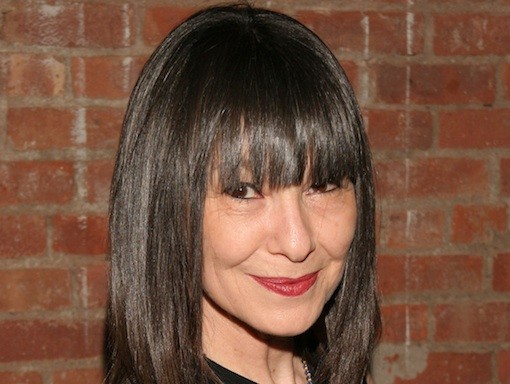The notion of collecting performance art can seem, at first, absurd. Like live music, performance art is an ephemeral medium, existing as a creative experience that the artist shares with his or her audience in real time... and then it's gone. However, artists often document their performances—through photography, for instance—creating objects that can then be collected by art lovers and museums, and they can also sell the props and other materials tied to the performance. In fact, museums are filled with famous artworks that stem from performances—just think of Yves Klein's body paintings, Jean Tinguely's sculpture Homage to New York, and much of Joseph Beuys's work. And while performances themselves are usually commissioned rather than purchased per se, that's beginning to change: in 2009 MoMA bought Tino Sehgal's performance Kiss, which involves a man and a woman re-enacting iconic kisses from art history.
Marina Abramovic's hugely popular retrospective at MoMA, meanwhile, was a landmark for performance art, displaying many of her seminal pieces in the form of reenactments done by "reperformers" she had trained for the show. While some artists and writers criticized the approach as commodifying Abramovic's radical performances—the critic Blake Gopnik wrote that "the museum has tamed her"—others praised it as a way of preserving ephemeral work. Now younger artists are moving in a similar direction. Clifford Owens's recent show at MoMA PS1 involved him asking other artists for performance-art "scores" that he then enacted in the museum, filling the galleries with photographs and other documentation of the performances. Tino Sehgal is also known for selling his performances to collectors as orally-transmitted scripts that they have to memorize in order to have them enacted later.
As performance art moves more and more into the mainstream of the contemporary art world, expect to encounter ever-increasing ways to collect work stemming from the medium. To find out more about how to collect this kind of art, we spoke to RoseLee Goldberg, founder of the Performa performance-art biennial and author of Performance Art: From Futurism to the Present.
Click here to read Goldberg discuss the artworks in our Performa collection.
What advice would you have for someone who is thinking about beginning to collect performance art?
Well, as with all collecting, knowledge is key. You need to learn as much of the history as possible, and it's an intriguing history because it takes you on so many tangents into different media and into social as well as political issues of the times, you will discover that all the major movements of the early 20th-century as we know them—the Futurists, Dadaists, Constructivists or Surrealists—involved live performance in one way or another. Later on, Jackson Pollock, Yves Klein, Joseph Beuys, Robert Rauschenberg, and Cindy Sherman all made work that began as or incorporated performance, even though they are best known for work produced as painting, sculpture, or photography. People will be very surprised by what this history reveals, and also by how much performance is already in the contemporary art museum—only by another name—not catalogued as performance per se but scattered across departments within the museum such as drawings, photography, or video.
How broad a variety of collectible objects arise from performance art?
It's wonderfully diverse—everything from texts to drawings, graphic design, costumes, and also film, video, sculpture, and painting. This applies to the contemporary art as much as to work from earlier in the century. For example artists such as Rirkrit Tiravanija, Pierre Huyghe, or Dominique Gonzalez-Foerster who fall under the so-called "relational aesthetics" umbrella, find ways to make film or installations that are an extension of, or a part of, performances. The work of many of the Chinese artists who came to our attention in the early '90s, such as Zhang Huan or Ai Weiwei, was exhibited in the form of photographs, sculpture, or video but was in fact also originally made as performance. Now, with so much new interest in performance, people are recognizing that this riveting material actually emerged from this process. Collecting performance-related material is not new—the newer question is, "How do we purchase the live performance itself?"
How important do you think it is for contemporary performance artists to make physical objects that arise out of their work?
Artists are very aware of creating an afterlife for their performances by finding a variety of ways to record and hold onto the original. The work coming out of performance is made with very particular considerations to maintain the intent and aesthetic of the initial performance no matter the eventual medium that will represent the live moment for posterity. In all of a work's phases, whether as live performance, video, or still photography, the artist is determined that the impact of the initial performance is carried forward and that it becomes a significant standalone part of his or her oeuvre.
You mentioned Joseph Beuys, who of course was very aware that he was creating images and objects that would be the residue of complex and complicated performances. Many others did the same, such as Joan Jonas or Vito Acconci, Anna Mendieta or Carolee Schneemann. Artists today have this earlier material as a reference and most will take the time to translate their live work into a form that will endure. As I said before, the images that emerge from performances are powerful and visually startling and seem to come from an entirely different place. Consider the photograph of Marina Abramovic sitting amongst a pile of bloody animal bones in her work Balkan Baroque. It's an extraordinary haunting image that could only have emerged from a live performance. The performance itself, which made reference to ethnic cleaning in Eastern Europe at the time, was incredibly moving and upsetting, but it also produced a hugely riveting and disturbing image as a photograph.
What kind of artworks relating to performance do you collect personally?
I have never collected art—I come from a generation that was pretty hung about the idea of an art historian or critic crossing that line. But my dream collection would consist of all the artists with whom I have worked over the years, from my days as director of the Royal College of Art Gallery in London in the early '70s—where I worked with Marina, Guilio Paolini, Christian Boltanski, and Anthony McCall—to The Kitchen in the late '70s, where we first showed Cindy Sherman's black-and-white film stills in 1978, Jack Goldstein's beautiful film The Jump, and early drawings and performances by Robert Longo, David Salle, and Troy Brauntuch, and many who have also been part of Performa such as Laurie Simmons, Joan Jonas, Daria Martin, Francis Alÿs, Shirin Neshat, or Mike Kelley. So, I do have a collection, but it's in my imagination. Maybe one little thing that I do have, which I always find to be a gem, is a George Maciunas ticket stub from something he did at the Anthology Film Archives many years ago.
How would you recommend that people incorporate performance-based works into their collection?
I think they're going to be of a piece with the collection that already exists. The best collections are very thoughtful bodies of work, and a collector is invariably going to think about how the various pieces talk to one another. There are a few collectors who have been collecting performance related work in various media for a long time, such as Michael and Eileen Cohen, who have an extraordinarily cohesive collection of artworks that all relate in some way to live performance. Most likely if you go through any collection that is fairly conceptually oriented you'll find elements of performance. Above all, let's remember that we're talking about performances by visual artists, which means that the residue of the performance, whatever the medium, will invariably be powerful both visually and conceptually.
You mentioned that there are now some collectors who are actually beginning to acquire performances. How does that work?
Yes, there are a few collectors who have recently become involved in purchasing live performance, and there are historical precedents for this as well, such as Yves Klein selling his "pictorial sensibility" for fourteen gold ingots in 1962. No doubt these collectors do so because they enjoy the intellectual and conceptual underpinnings of the work and the direct involvement with the artist. They enter into the piece as a participant or a 'witness.' They might also enjoy playing the role of patron or commissioner. I'm reluctant to think about this in terms of the marketplace, but rather as a more intimate exchange between collector and artist. I don't think this process is going to make any artist especially wealthy, but, yes, given that the new museums of the 21st century will all have performance art departments and will be collecting live performance, this is an exciting new area for the adventurous collector.
It's interesting in terms of museums that the Whitney is going to devote an enormous amount of space to performance in their new building when they move down to the Meatpacking District.
The Whitney has always had a very strong commitment to performance and the new Whitney downtown will make that legacy very clear with an even stronger performance program in the future. Most museums from now on will include performance as part of their programming. Tate Modern has had a strong performance program since its inception in 2000 and the new Tanks spaces are entirely dedicated to contemporary performance and performance history. Museums today are being designed as places for gathering together large numbers of people and providing as much interactivity as possible, which is very different from going to museums in the '70s, when the experience was more like going to a library or study hall. It was a place where you contemplated the art around you and talked in a whisper, whereas nowadays it's a rousing scene. It's a lot more about engagement and action, which is fun because it brings a much younger generation and a much broader public into the discussion.
The Performa biennial and Marina Abramovic's retrospective at MoMA have really brought performance art to a level of exposure in the museum world that had never existed before. What do you see as the future of the way that performance art is incorporated into the broader art world and collected?
Performance is going to be the medium of the 21st century for all kinds of reasons, but especially because it is so layered—an artist can use so many different kinds of media in all kinds of combinations to articulate whatever it is that's obsessing them. Given the highly mediated world in which we live, it provides channels for these many considerations. And as I said, this plays into the idea of the museum as a place of activity, of communities forming around different exhibitions where people have shared experiences and are eager to discuss their different responses to those experiences. Marina's show at MoMA showed what I mean by 'community' developing around an event. People came back over and over to see the show, to sit with her, to watch others waiting in line for a few moments of eye contact with the artist. Simply put, people like being together and they like the conversation that can come out of that shared experience.
A key part of what Performa did was show that performance could have a large audience. Many people, including art critics, thought of performance art as this severe, painful, walking-across-broken-glass art form, which it was in the '60s and '70s because that is what the politics of era called for—it was representing artists' conversation about Vietnam, which demanded an art that carried the intensity of the era. Performa showed that performance wasn't just about the '70s, that it could exist in many different ways and be as strikingly beautiful and elegant and visceral as any artwork that we're used to seeing in the spaces of a museum. Given that the new museums around the world will be showing performance in the future, Performa has an important role to play in explaining its history in the most vivid and most public ways, and to commissioning and producing new work for the 21st century with a special care that the artists appreciate and of a caliber that museums will exhibit.
I guess it's safe to say that now is a good time to start collecting performance art?
Yes, it is a good time to start collecting, because there is an entire century of work that's been overlooked but also because there will be a new wave of performance by emerging artists who will be incorporating all the thinking we've been discussing, about making objects, films or videos of a live performance, for posterity. But what excites me most about the rise in collecting performance art is that it's a way for the collector to gain entrance into the mind of an artist and discover things that they were simply not aware of previously. By its very nature, collecting performance will be more idea-based and will in most cases necessitate a direct connection with the artist. So the involvement of collecting performance will in and of itself be a powerful education, bringing the collector closer to the intentions and values of the artist and to thinking with them about how art affects us and changes our points of view, and what it does to heighten our sense of our humanity. So, yes, it is a good time.
Expert Eye
Performa Founder RoseLee Goldberg on Collecting Performance Art



























